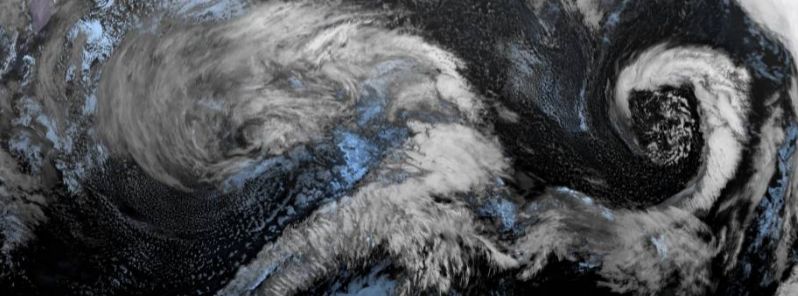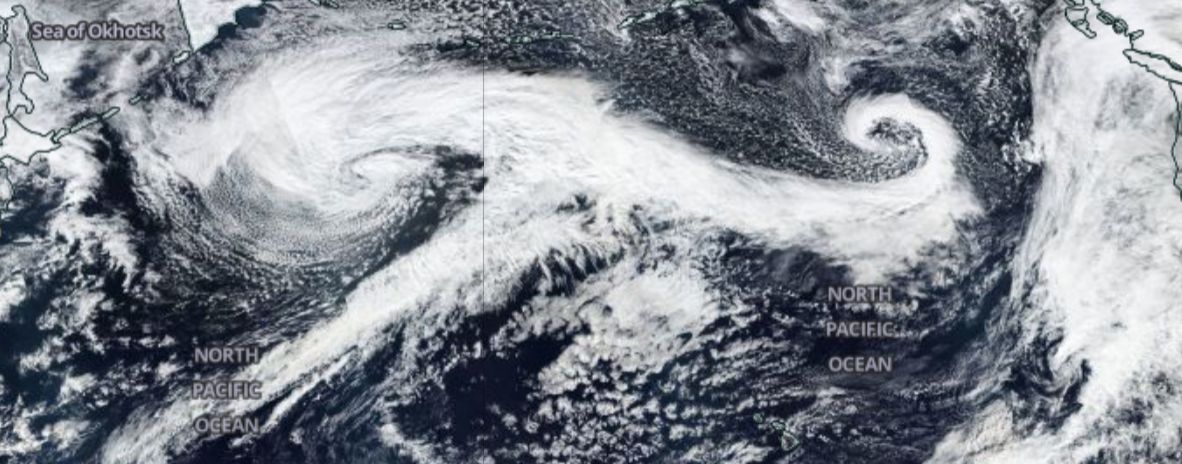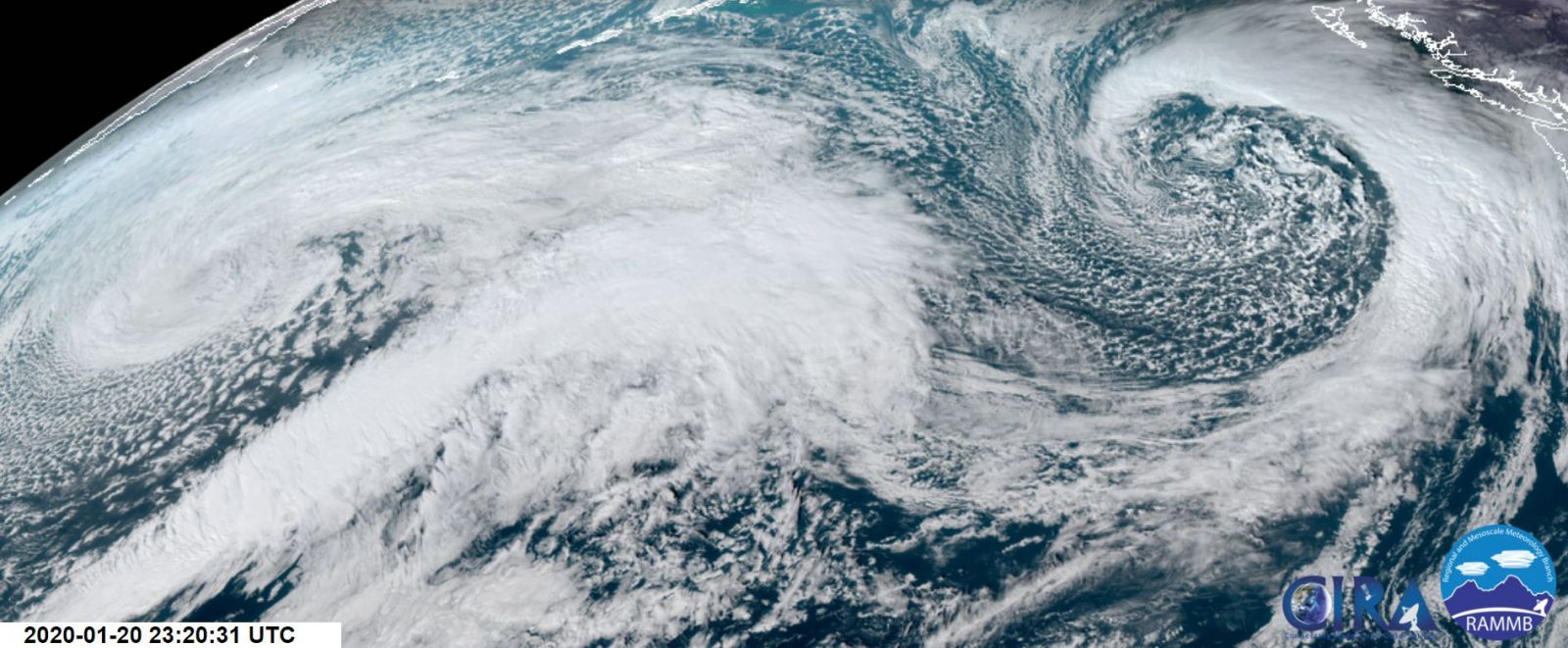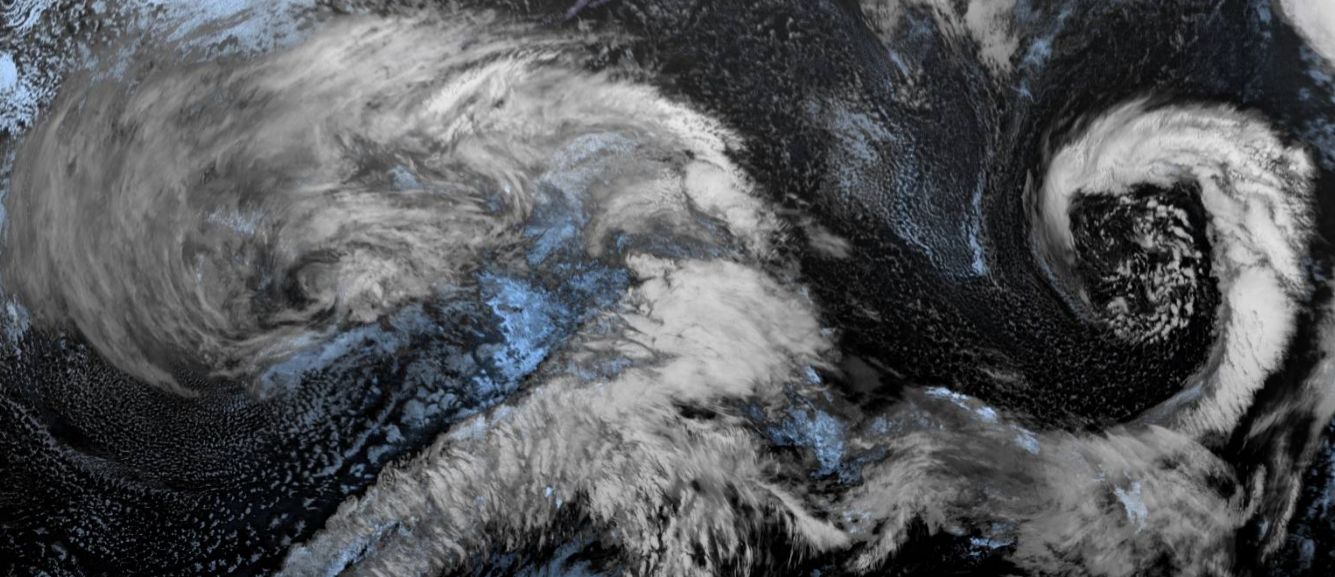Two interconnected deep cyclones form over the North Pacific Ocean

Two deep cyclones were spotted forming over the North Pacific Ocean on January 20, 2020– simultaneously occurring between Asian and North American continents. The twins are expected to head towards the northwestern US and southwest Canada, bringing severe winds and rough waves into coastal areas.
In an analysis by Severe Weather Europe on January 20 at 06:00 UTC, both systems were visible– the western cyclone was bigger and deeper, while the eastern one had more "textbook" structure. "Both systems are actually connected with the front, as we can see the cold front from the right one is becoming a warm front on the left cyclone after it passes 155W longitude."
Furthermore, SWE said the cyclones were working in tandem, connected with each other with the frontal boundary in between them.

Image credit: NASA/NOAA Suomi NPP/VIIRS Acquired January 20, 2020.

Image credit: NOAA/GOES-West, Acquired January 20, 2020 at 23:20 UTC

Image credit: NOAA/GOES-West. Acquired January 20, 2020
The cyclones are expected to move towards the northwest US and southwest Canada. Strong wind fields are related to the systems, which are forecast to bring powerful winds and waves into the northwest North American coastal areas.
According to global models, more deep cyclones are forecast to travel across the North Pacific later this week.
Meanwhile, as of Wednesday, January 22, another explosive cyclogenesis was seen over the North Pacific which was heading towards Alaska. "A new explosive development of an extra-tropical cyclone took place just south of the Kamchatka Peninsula," Severe Weather Europe said.
This new storm is expected to bring hurricane-force winds into the westernmost islands of the Aleutian Islands on Wednesday night and Thursday, January 23, while the cyclone will be retreating northwestwards until Friday, January 24.
Featured image credit: NOAA/GOES-West

This seem to be the case. I sent to others, and have found this. My local weather station did mention this at all. Please speak truth???